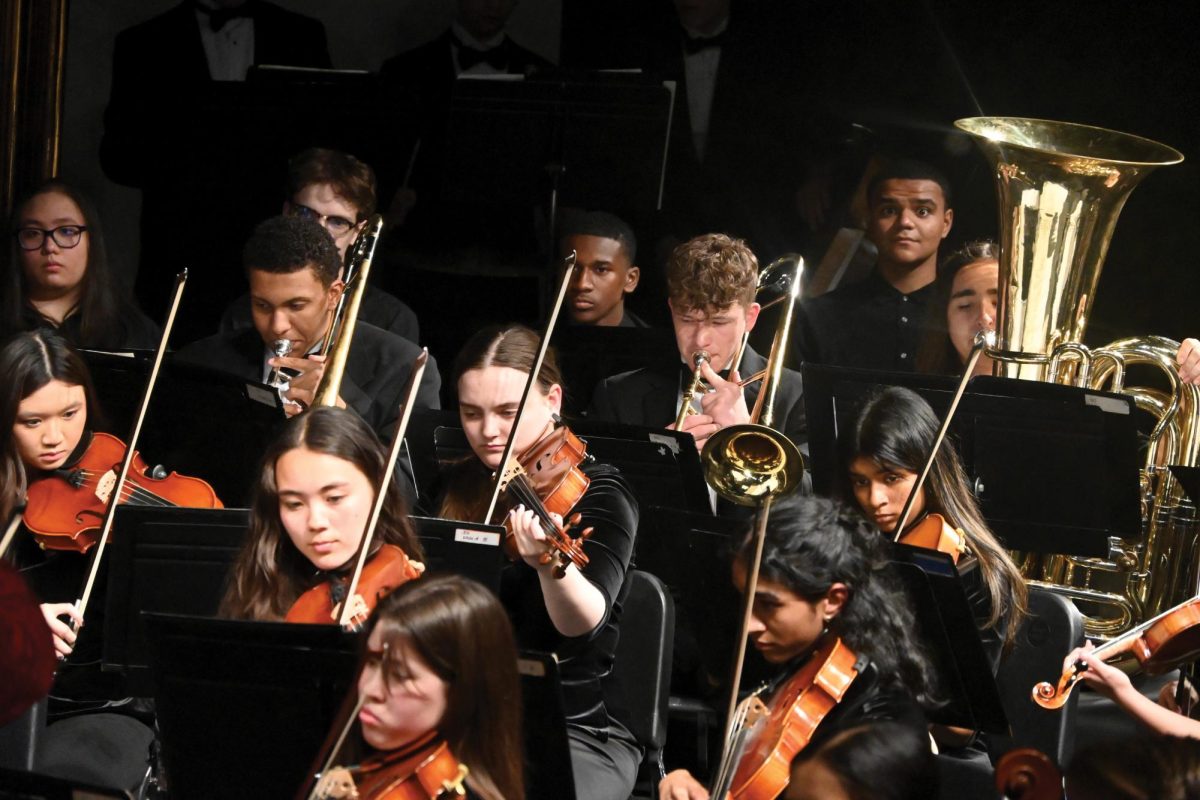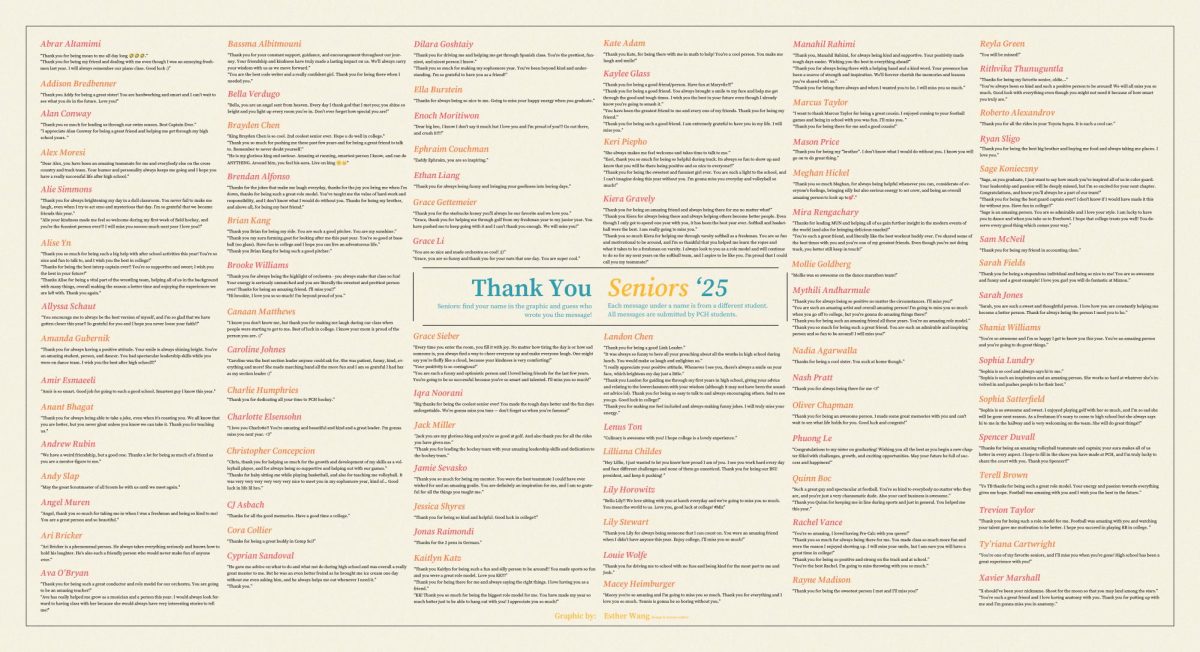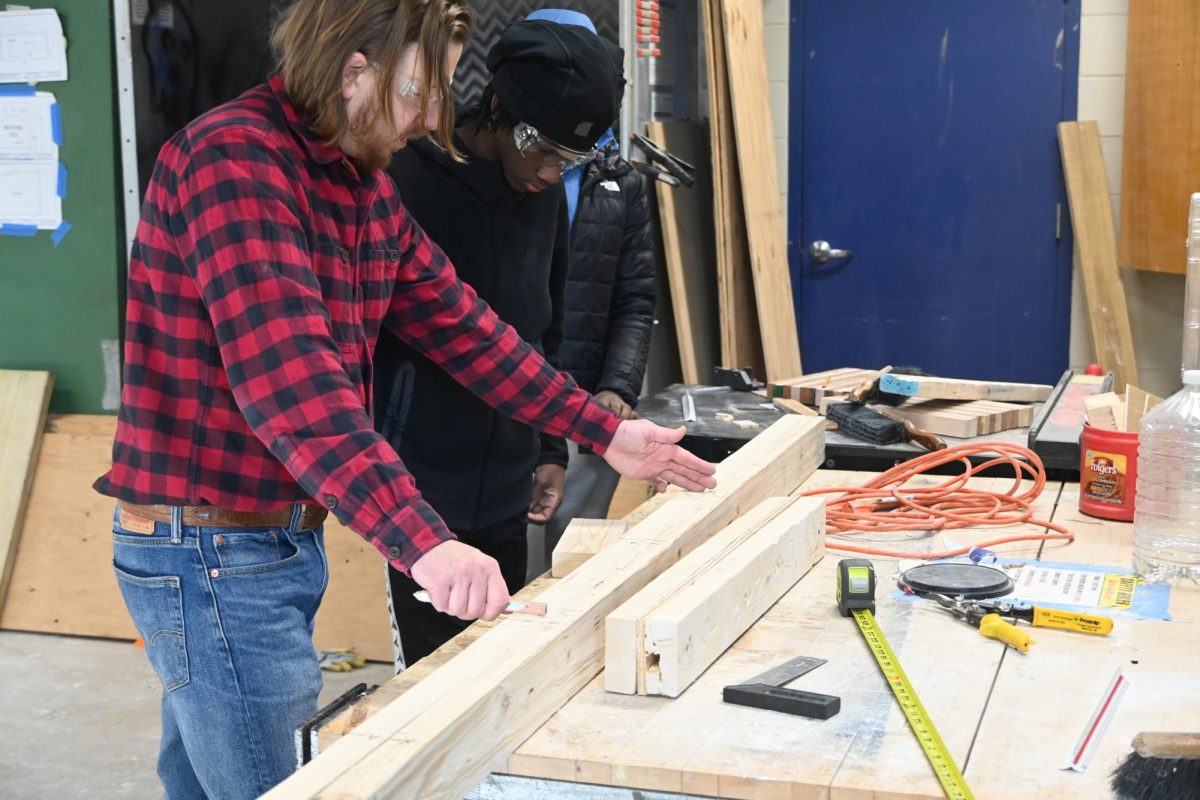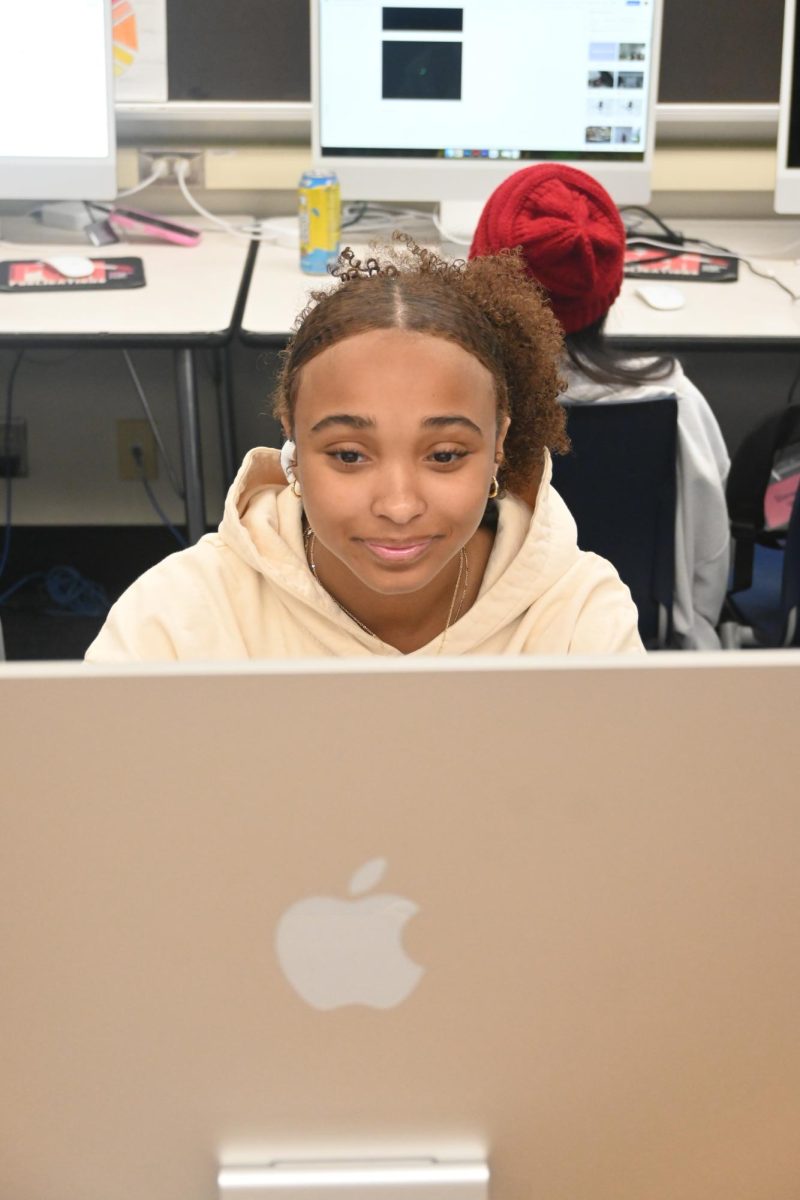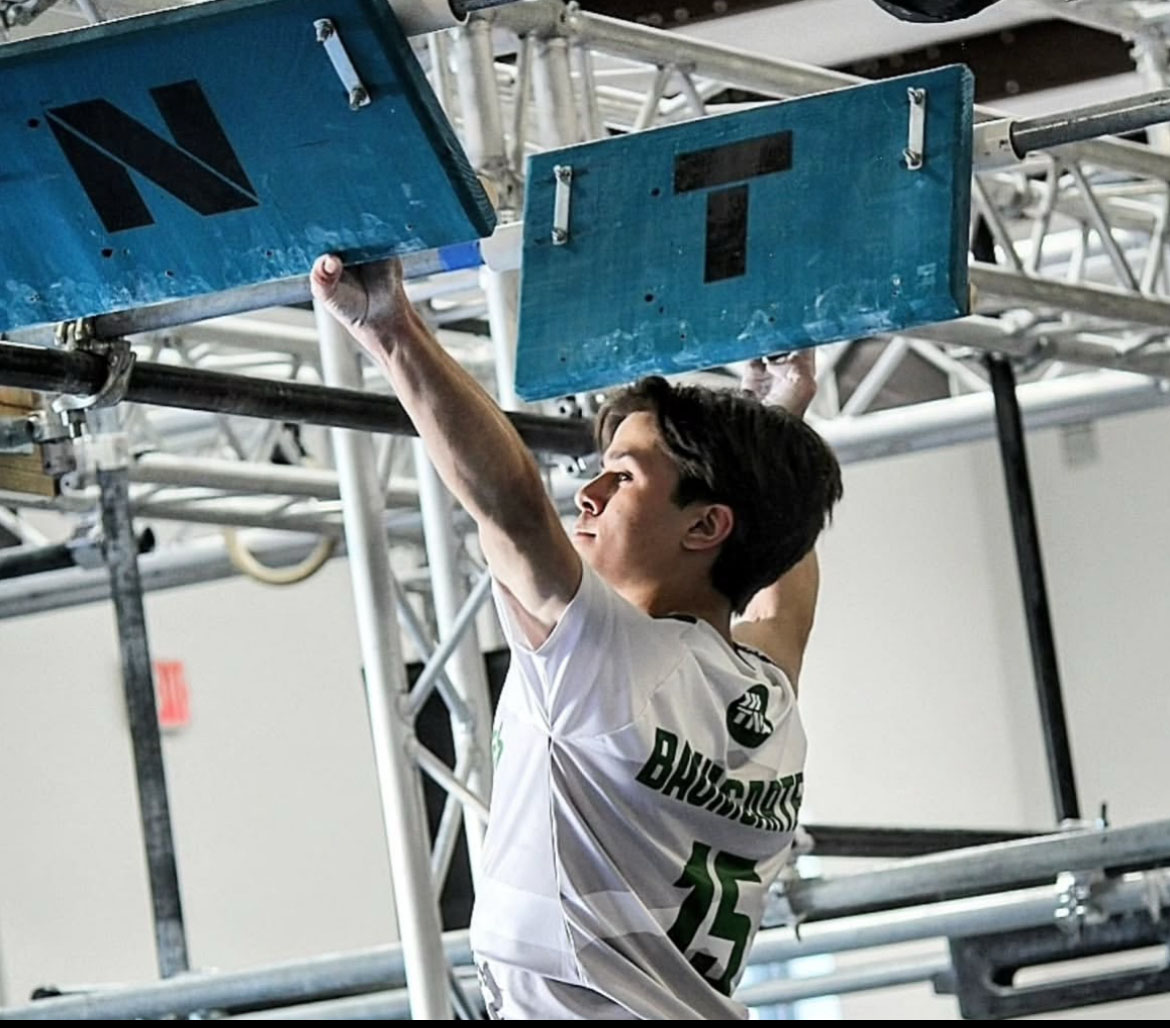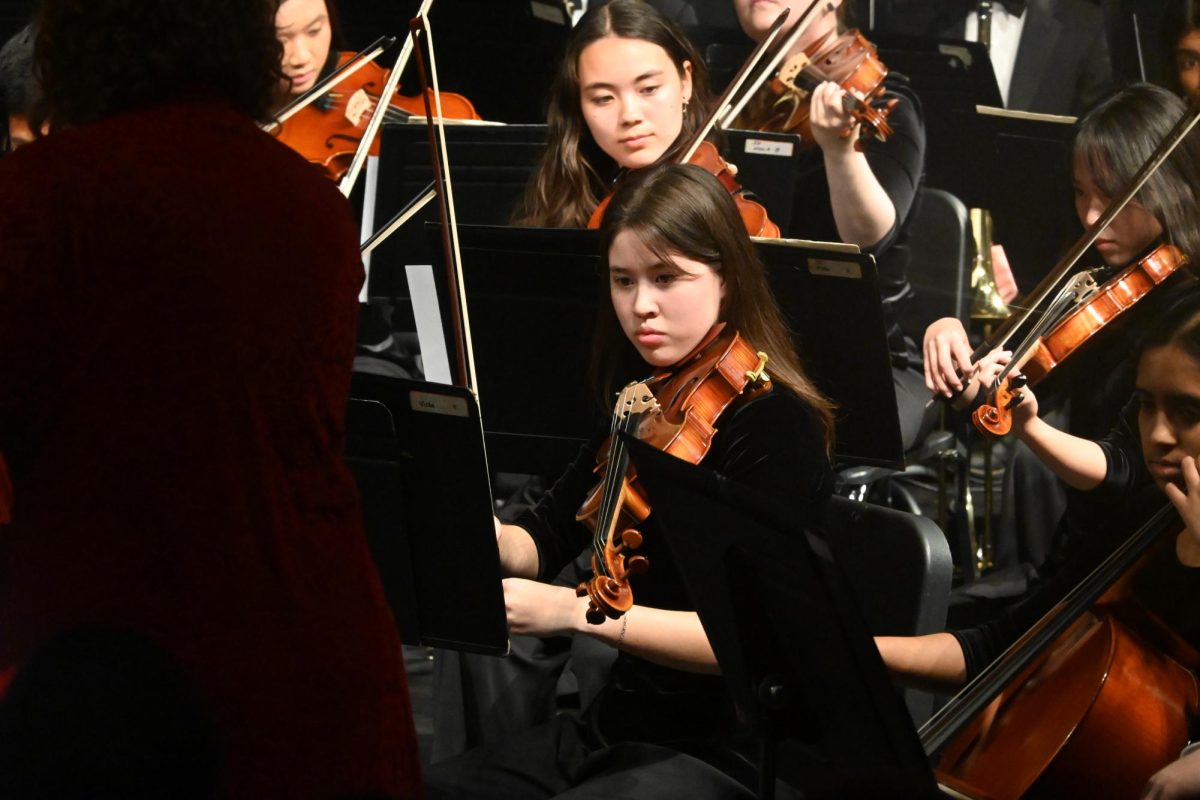Differing not only in composition of music but composition of students, Jazz Band is a unique class. Students end up spending much time together not only trying to master the difficult style but to jam with some of their friends.
“It’s not too different from other band classes,” sophomore Adam Cohen said. “There’s less people and more independent parts.”
Jazz Band is unlike your typical band class in that it enables students to develop a different style of music than they are used to in other formal training. Emphasized areas include individual improvisation, ensemble performance, and jazz theory. Another difference, as Cohen noted, is that every instrument in the section is not always playing the same part. Often, he says, trombone one and trombone two will be playing different lines.
“It’s difficult to learn jazz articulation,” senior and guitarist Jack Connolly said. “We have to learn to play almost the opposite style from previous experience.”
Connolly says that stylistically jazz is much more smooth and legato than what they have learned from other formal music training such as Marching and Symphonic Band. While this may be difficult for newcomers to master, once they pick it up they are able to play many songs.
“If you learn something from a song you’ll be able to apply it to a different one,” Connolly said. “I’ve learned how to learn something new all from listening to a song.”
Members affirm that the intense training of this class has helped their music skills improve greatly. Comments and criticism from band teacher Mr. Doug Hoover have helped sophomore Cole Edelstein grow along with being a leader in a group of talented musicians.
“I have learned greatly in terms of music,” junior Jacob Parmley said. “I can sight read and overall just play better at a much higher level.”
The style does not stop at jazz, though.
“The best part of Jazz Band is playing styles from rock to funk to big band jazz,” Edelstein said.
The members bring a lot of enthusiasm into their music. With their classics they play every year and their new rotations of songs, Connolly says that the total they learn each year is around eighty. The hard preparation pays off in the end, though.
“Once we work really hard on a song it’s easy to get stuck in your head and want to play it again, though,” Edelstein said.
The members are also noted for their companionship. Students like Parmley say that everyone is friends in the class, whether they began that way or not.
“I joined mainly because my friends joined,” Parmley said. “Some people are new to me but most I was already friends with.”
The musicians believe this is because of the intimacy of the group. Edelstein noted that his heavy involvement in band has strengthened friendships.
It’s much smaller than the marching band, 15 students compared to about 80, so everyone has a chance to get to know one another.
Connolly thinks having the same mindset about music helps, too. All the member’s heavy involvement in different music groups throughout the school has help strengthened their friendships.
“Everyone has great musicianship,” Connolly said. “If someone starts playing something everyone else can jam with them because we can listen, follow, and adapt.”


